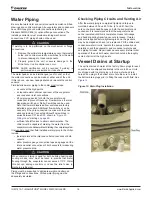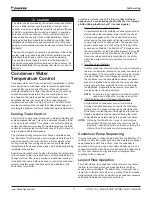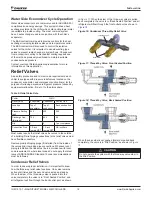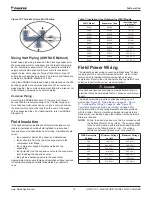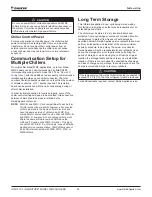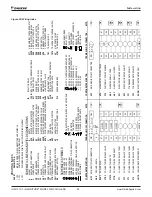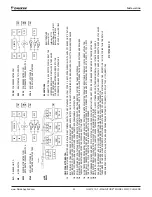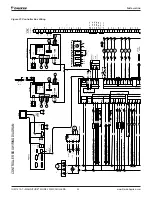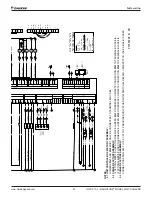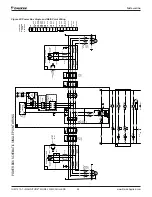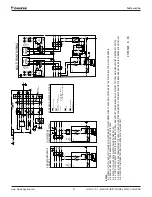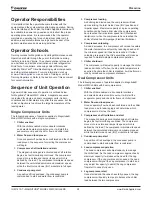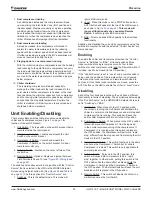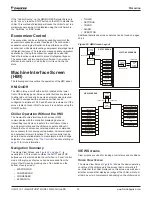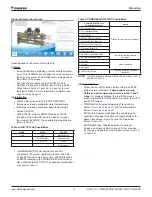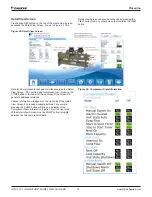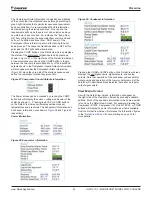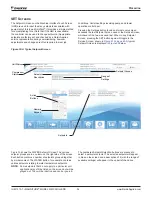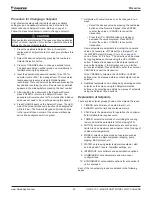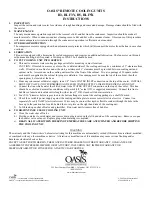
IOM 1210-7 • MAGNITUDE
®
MODEL WMC CHILLERS
20 www.DaikinApplied.com
I
nsTallaTIon
CAUTION
Do not use power factor correction capacitors with WMC
chillers. Doing so can cause harmful electrical resonance in
the system. Correction capacitors are not necessary since
VFDs inherently maintain high power factors.
Chiller Control Power
For proper operation on standby power, the chiller control
power must remain as factory-wired from a unit-mounted
transformer. Do not supply chiller control power from an
external power source because the chiller may not sense
a loss of power and may fail to perform a normal shutdown
sequence.
Communication Setup for
Multiple Chillers
On multi-chiller Model WMC applications, up to four Model
WMC chillers can be LAN interconnected by field RS485
interconnecting wiring (refer to Lines 165-174 on
) with the addition of an accessory communication
isolation board between each chiller connected. The total
number of isolation boards needed is one less than the number
of chillers connected, or N-1 boards required. The isolation
board can be purchased with the unit or separately, during or
after chiller installation.
In order for interconnection to function properly, some of the
chiller control settings will need to be modified. Interconnection
between chillers should be made at startup by the
Daikin Applied technician.
NOTE:
WMC-B and WMC-C are compatible with each other
for interconnection via pLAN, however, all connected
chillers must share the same software revision and
have the same version of chiller code. WMC-D is
compatible for interconnection via pLAN with WMC-B
and WMC-C, however, ALL connected chillers must
share the same software revision AND have the
HMI and PC used on the WMC-D model. If trying to
connect WMC A to B, C or D models, consult a Daikin
Applied service representative. WMC chillers cannot
be pLAN interconnected with WSC, WDC, WCC or
WME chillers.
Long Term Storage
This information applies to new units being stored waiting
for startup or to existing units that may be inoperative for an
extended period of time.
The chiller must be stored in a dry location indoors and
protected from any damage or sources of corrosion. Monitor
temperatures to protect from freeze or heat damage as
described below. A Daikin Applied service representative must
perform an inspection and leak test of the unit on minimum
quarterly schedule, to be paid by the owner or contractor.
Daikin Applied will not be responsible for any refrigerant loss
during the storage time or for repairs to the unit during the
period of storage, or while moving the unit from the original
location to a storage facility and back to any new installation
location. If there is concern about the possibilities of damage
and loss of charge during storage, the customer can have the
charge removed and stored in recovery cylinders.
CAUTION
If the temperature of where the chiller is located is expected to
exceed 104°F (40°C), then the refrigerant must be removed.
For additional tasks required, contact Daikin Applied service.











